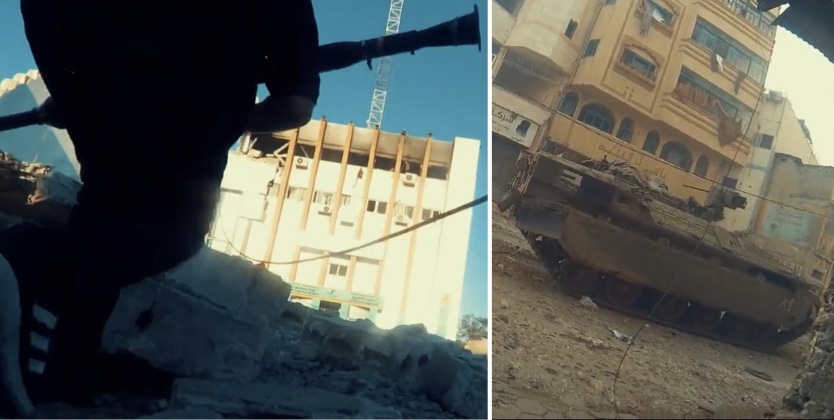News
Hezbollah Makes First Deployment of Javelin-Type Anti-Tank Missile Against Israeli Armour

Amid ongoing hostilities between Israeli forces and the Lebanese militia and political party Hezbollah, on January 25 the first publicly available footage was released showing a new class of anti tank missile being deployed against an Israeli surveillance outpost on the Israeli-Lebanese border. The missile’s flight profile notably closely resembled that of the Israeli Spike missile, a sister system to the American Javelin which recently gained significant publicity internationally for its successes in combat in Ukraine. While little is known regarding the missile class Hezbollah used, both the Javelin and the Spike consist of similar components and technologies, and combine use of tandem shaped-charged warheads with the ability to engage targets’ top armour to maximise their ability to defeat vehicle armour. The missiles notably do not need direct line of sight, and use electro-optical sensors to home in on their targets. The Chinese HJ-12 was previously thought to be the only comparable system fielded by a U.S. adversary, although the latest footage indicates that Hezbollah has acquired a comparable asset likely from either Iran or North Korea which have been its leading equipment suppliers for decades. Demonstration of the new weapons system was likely intended as a show of force as calls in Israel continue to grow for an escalation of the war effort into an invasion of Lebanon.
The Iranian Almas anti tank missile system developed in the 2010s was long speculated to have comparable capabilities to the Spike, and is thought to have seen its development benefit from study of Spike systems which Hezbollah captured from Israeli forces during the militia’s month long war with the country in 2006. During the war, which is considered Israel’s only defeat in its 75 year history, Hezbollah made extensive use of Russian Kornet anti tank missiles, older versions of which were delivered by Syria and proved highly effective against Israel’s newly inducted Merkava IV tanks. Hezbollah is considered the most powerful non-state military force in the world, and has consistently received some of the most advanced equipment produced in Iran. Its frontline position and extensive combat operations in both Syria for counterinsurgency operations and on the Israeli border mean its units are on average not only significantly more experienced than their Iranian counterparts, but also much better equipped due to their higher priority status.

Unlike Hezbollah, the Palestinian militant group Hamas which is currently engaged in much more intensive combat with Israeli forces following an Israeli invasion of the Gaza Strip in October has made use of less advanced rocket propelled grenades to take a serious toll on Israeli armour. Hamas has utilised a tunnel networks to redeploy its forces close to Israeli armour to launch attacks from ranges too close for their Trophy active protection systems to intercept them. North Korean F-7 rocket-propelled grenades are confirmed to make up a significant proportion of the Hamas arsenal, while the Korean Bulsae-3, an equivalent to the Russian Kornet, is reported to be fielded by Hezbollah and was thought to be the militia’s most capable anti-tank asset before the latest footage of a new missile system was released. Hezbollah has maximised its ability to threaten Israeli forces asymmetrically by relying on an extensive network of tunnels and bunkers extending across Southern Lebanon, which is able to house transporter-erector launchers and mobile artillery units among other assets safely from Israeli air strikes. The militia is also speculated to have received intelligence on the latest protection systems of Israeli armour after hundreds of Israeli armoured vehicles were captured by advancing Hamas forces in early October.












